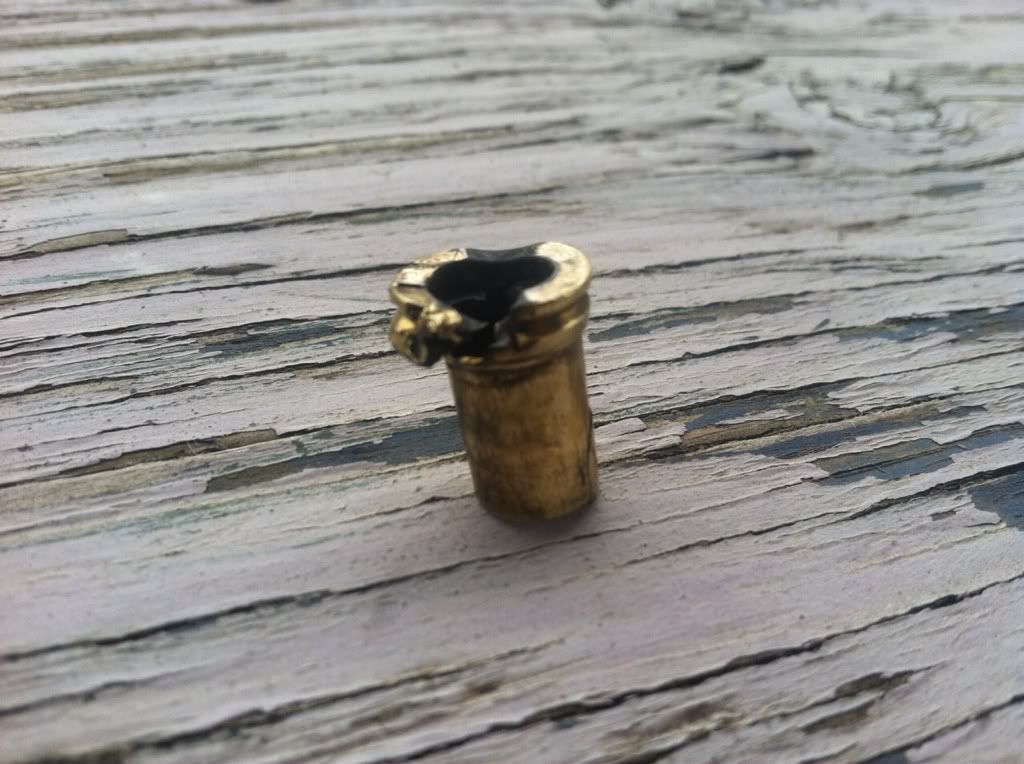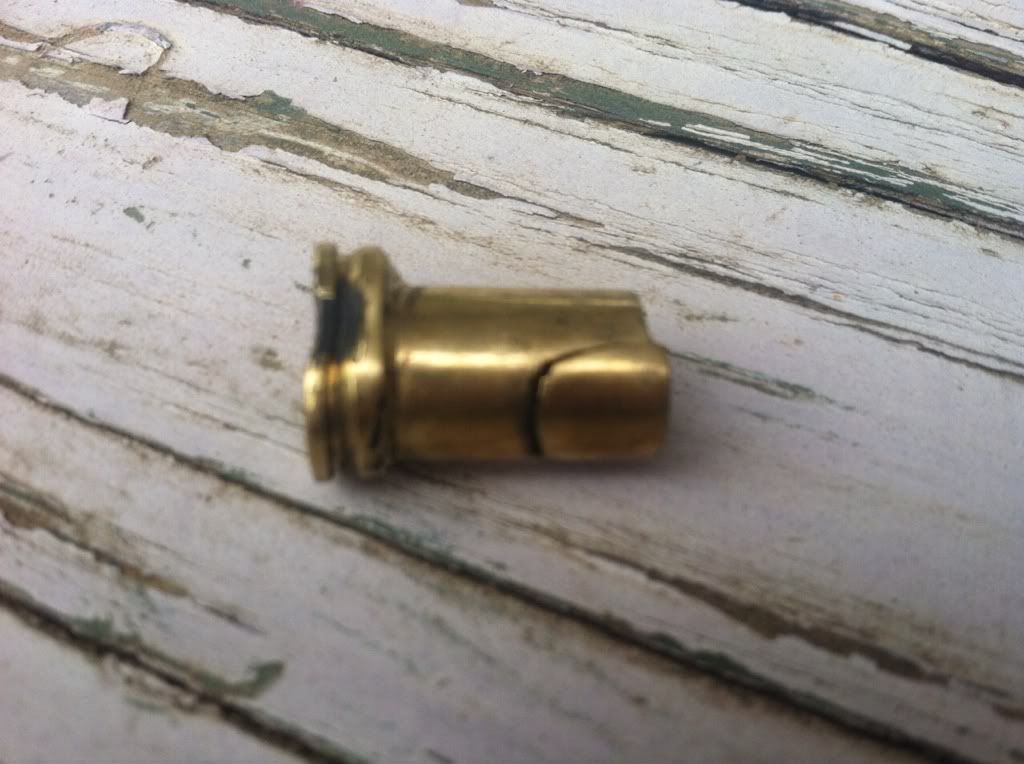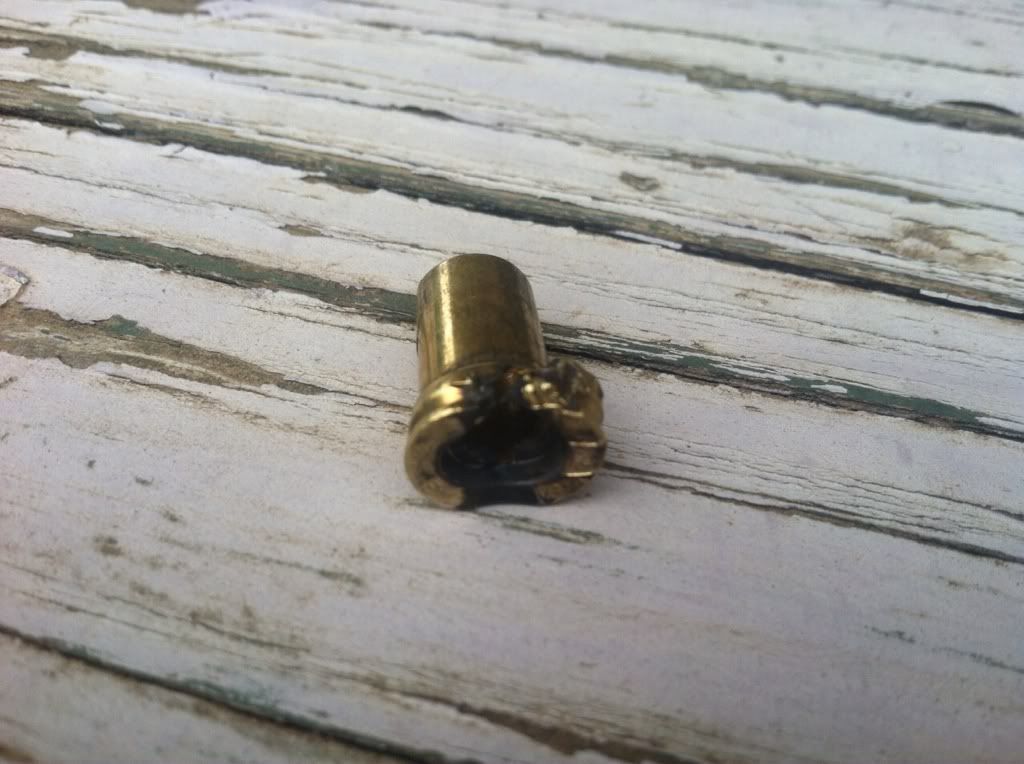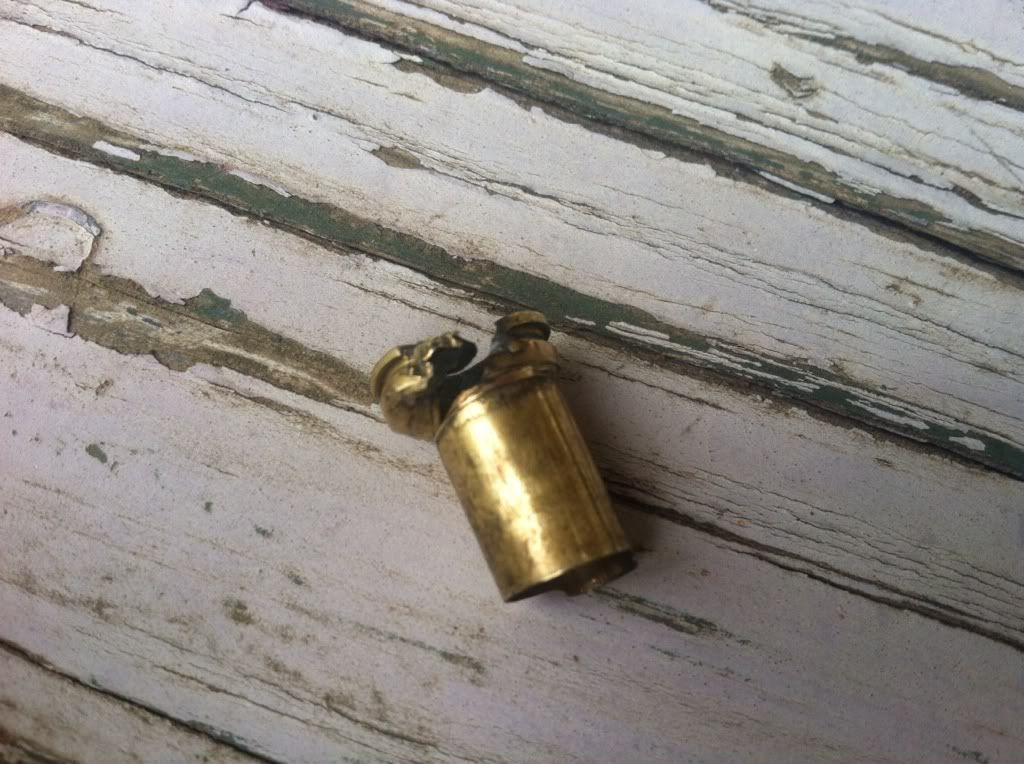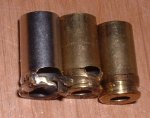Join the Hide community
Get access to live stream, lessons, the post exchange, and chat with other snipers.
Register
Download Gravity Ballistics
Get help to accurately calculate and scope your sniper rifle using real shooting data.

Install the app
How to install the app on iOS
Follow along with the video below to see how to install our site as a web app on your home screen.
Note: This feature may not be available in some browsers.
You are using an out of date browser. It may not display this or other websites correctly.
You should upgrade or use an alternative browser.
You should upgrade or use an alternative browser.
Pistol case failure
- Thread starter rrflyer
- Start date
Looks like it fired out of battery, stuck firing pin or high primer maybe? Lucky to have only blown out the ejector.
First let me start of by saying that I am no expert in reloading but that does not stop me from offering opinions. To me that looks like the perfect storm of a case failure, while firing out of battery is without a doubt a contributing factor I’m not entirely convinced that was the only factor. Granted I have only been on the forum’s for about 2 years and reloading a few months less but I have never seen such catastrophic damage done to a case head from an out of battery firing, that is truly spectacular. In most if not all of the OOB ruptures I have seen the case failed in one direction, but in this instance the case head expanded in all directions as well as failing at the mouth. Again in almost all instances I have seen when a case fails it fails at one point not two as this case has, it just leaves me scratching my head and wondering what other if any contributing factors might have been.
I know this was not your gun but I would be very interested in hearing more information about the circumstances if you can get them from your BIL, specifically was this a reload or factory round, if reload what powder and charge weight, primer, what brass and how many loading were on the brass, bullet and OAL and were there any other issues with the pistol right before this happened, like a squib?
Anyway glad your BIL was not hurt and I look forward to hearing more about this if possible.
I know this was not your gun but I would be very interested in hearing more information about the circumstances if you can get them from your BIL, specifically was this a reload or factory round, if reload what powder and charge weight, primer, what brass and how many loading were on the brass, bullet and OAL and were there any other issues with the pistol right before this happened, like a squib?
Anyway glad your BIL was not hurt and I look forward to hearing more about this if possible.
Honestly. It looks like the first round was a squib, bullet never cleared barrel, and allowed the next round room to get far enough in the chamber to fire....yes possibly OOB but that would not explain the massive failure at the primer and rim. Lots of carbon at the primer. I don't think this is an OOB, I think it was two bullets in the barrel. But then I didn't stay at a Holiday Inn express last night. I agree that an OOB doesn't look like this as EMorr alluded to, es the case fails but not this graphic.
First off, glad you are OK. The brass is only half of the puzzle. Need to see the barrel and slide to give a real opinion. Based on the brass, gun was out of battery when it fired. Was the ammo a handload? Force always takes the path of least resistance, so it is possible you had a squib before. I have seen a lot of bulged barrels from squibs, but never a case failure. All the squibs I have seen were followed up with another round while the gun was in battery.
Charge weight and seating depth? Crimping method and degree? Lots of things involved here, all of which are coming right back to a massive overcharge.
I have worked up over loads in semi auto pistols in 25acp, 32acp, 7.62x25mm, 380, 9mm, 9x23, 40sw, 10mm, and 45acp just to see what happens.
I started reloading 13 years ago and immediately started overloading to see what happens.
I have only blown the extractor out in the first year, in 9mm and 7.62x25mm.
I soon learned not to do that. The pieces of the extractor could kill someone standing on the right. There are pressure signs WAY before the extractor blows out.
This is a work up:
9mm 115 gr JHP AA#5 max load = 7.7 gr, the gun tested has a .19" feed ramp and the brass has a .16" thick web:
0) Minimum charge to cycle pistol........ 5.0 gr.
1) 9x19mm.................................7.7 gr.
2) 9x19mm +P............................. 8.0 gr.
3) 9x19mm +P+............................ 8.3 gr.
4) .356TSW............................... 9.1 gr.
5) Primer pierce, case bulge ............10.0 gr.
6) Case failure [hole] threshold [kaboom] 10.7 gr.
7) Case head separation 11.5 gr. wrecks extractor andhold open, blows the bottom plate off the magazine, ammo, mag spring, and follower fall out. Bits of brass come back through the ejector slot in the slide and spray the shooter's face.
Here is a picture of right to left:
a) bulge over feed ramp [10 gr]
b) case hole over feed ramp [10.7 gr]
c) case head failure primary failure [extractor failure is a secondary failure] [11.5 gr]
What does it all mean?
In a work up, when you see a feed ramp case bulge... STOP.
Never shoot that load again or anything hotter than that.
Back off the powder charge 6% from the first tiny sign of case bulge.
That is the max useful load in that gun.
I started reloading 13 years ago and immediately started overloading to see what happens.
I have only blown the extractor out in the first year, in 9mm and 7.62x25mm.
I soon learned not to do that. The pieces of the extractor could kill someone standing on the right. There are pressure signs WAY before the extractor blows out.
This is a work up:
9mm 115 gr JHP AA#5 max load = 7.7 gr, the gun tested has a .19" feed ramp and the brass has a .16" thick web:
0) Minimum charge to cycle pistol........ 5.0 gr.
1) 9x19mm.................................7.7 gr.
2) 9x19mm +P............................. 8.0 gr.
3) 9x19mm +P+............................ 8.3 gr.
4) .356TSW............................... 9.1 gr.
5) Primer pierce, case bulge ............10.0 gr.
6) Case failure [hole] threshold [kaboom] 10.7 gr.
7) Case head separation 11.5 gr. wrecks extractor andhold open, blows the bottom plate off the magazine, ammo, mag spring, and follower fall out. Bits of brass come back through the ejector slot in the slide and spray the shooter's face.
Here is a picture of right to left:
a) bulge over feed ramp [10 gr]
b) case hole over feed ramp [10.7 gr]
c) case head failure primary failure [extractor failure is a secondary failure] [11.5 gr]
What does it all mean?
In a work up, when you see a feed ramp case bulge... STOP.
Never shoot that load again or anything hotter than that.
Back off the powder charge 6% from the first tiny sign of case bulge.
That is the max useful load in that gun.
Attachments
Similar threads
- Replies
- 18
- Views
- 684
